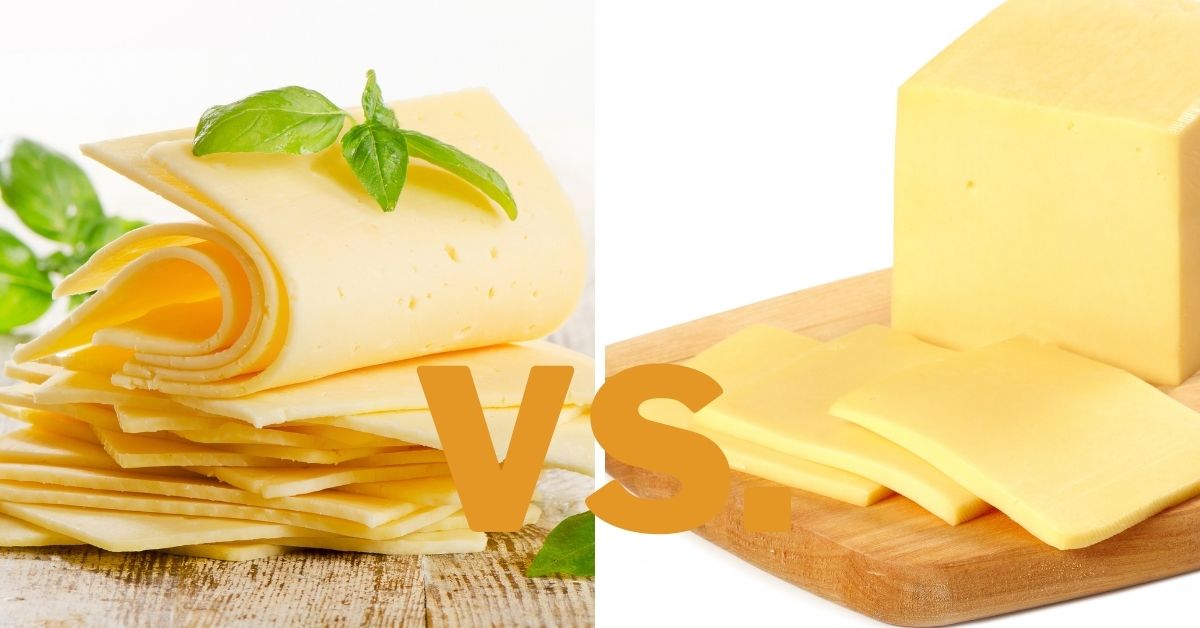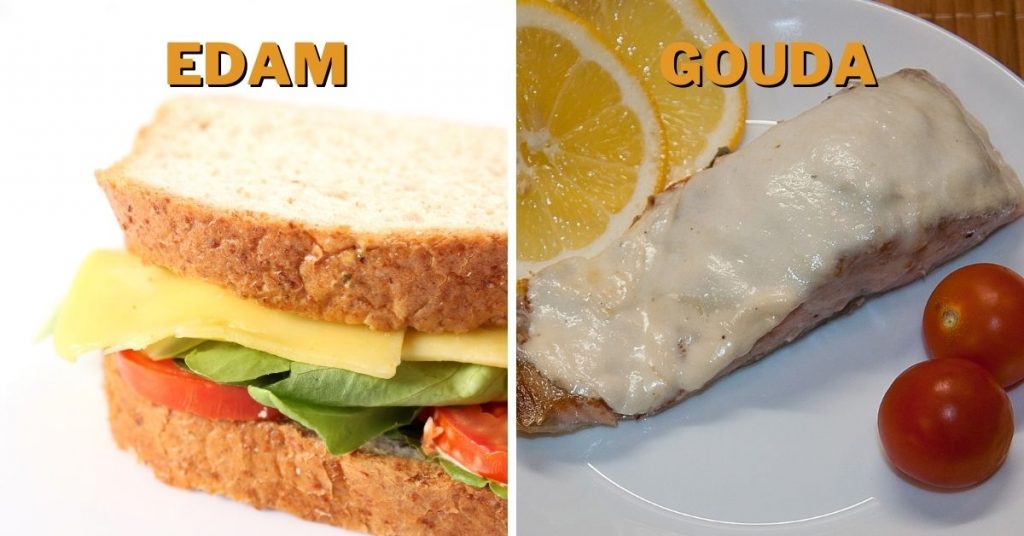Edam vs. Gouda: Differences & Which Is Better?

Choosing the right cheese for your meals or snacks can be a real nightmare. There are so many choices, and all types are somehow similar to one another. That is the case with Edam and Gouda, so people usually find themselves at crossroads when they try to pick one. So, how are Edam and Gouda different, and which one is the better option?
Edam and Gouda are generally similar in features and they both have Dutch origin. However, Edam is made of part-skimmed milk, so it is lighter and drier in texture. Gouda is made of whole milk, meaning it contains more fat, resulting in a creamier texture and taste.
This article will be extremely helpful if you want to realize the true differences between Edam and Gouda. I have made a precise comparison between these two types of cheese. So, next time you decide to make your favorite pizza, you will not have to torture your brain in the decision between Edam and Gouda.
Edam vs. Gouda: Differences
A precise comparison of Edam and Gouda is everything you need to understand what is going on with these types of cheese. Therefore, below you will read about the origin, nutritional values, texture, taste, and uses of both Edam and Gouda.
After you read the comparison, you will be able to decide which cheese suits both your taste and needs.
Origin And Preparation
Both Edam and Gouda have Dutch origin, meaning they come from the same country. But, more interestingly, they both come from the same city. However, the areas and regions where they have been originally made differ. Therefore, Edam was first produced in north Amsterdam, in the area of Edam, while Gouda came from southwest Amsterdam, in the region around Gouda town.
You would probably assume that since they are so similar, they are probably prepared in a very similar way as well. However, Edam is prepared with part-skimmed milk, containing 40% of fat.
On the other hand, Gouda is made of whole milk, and it includes 48% of fat. The ingredients used for their preparation make a real difference in their textures, although that cannot be easily seen with the naked eye.
Texture
The biggest difference that can be seen between Edam and Gouda is the texture. On the one hand, Edam is more dry and light, and its texture is generally sharper than Gouda.
In addition, melted Edam browns better and flows less. For some dishes which require melted cheese, it might be more convenient.
On the other hand, Gouda has a creamy texture that can remind you of butter. This kind of texture allows the addition of different spices and herbs. Also, Gouda can resist browning when melted, so people like to choose this type of cheese for cooking.
Taste
The taste of Edam and Gouda can sometimes be tricky to differentiate. Since they are both made of cow’s milk, they contain very similar flavors. Those who are not very familiar with different cheese types cannot generally notice the difference.
When you eat Edam, you should expect more saltiness rather than sweetness. Also, this is a lighter type of cheese, meaning that it does not contain a lot of fat. So, you should not expect creamy and rich flavors.
On the other hand, Gouda is characterized by the richness in flavors and mild sweetness in taste. Gouda is creamy since it is made of whole milk, so the richness comes with fat. The texture is smooth and buttery, and you can also sense some kind of nutty flavors included.
Uses
The main point in understanding different cheese types is knowing when and how to use them. Many types of cheese have similar features, but not all of them are suitable for the same purposes. On some occasions, you can use some cheese variations interchangeably, but in others, it might not be possible. That is why it is essential to make the comparison in the first place.
For instance, Edam is sliceable cheese, meaning that it is convenient for sandwiches. However, its texture also allows it to be used in different kinds of sauces, soups, and roulades. What is more, Edam can be also combined with a good wine, such as Syrah if you prefer red wine, or Riesling, if you prefer white wine.
Gouda is equally versatile as Edam, meaning that you can find a lot of uses for this type of cheese. Due to its texture, you can easily crumble it or grate it as a topping of a salad or a similar dish. Also, since Gouda melts easily, you can use it in sauces and soups and a combination with a good wine, like Pinot Gris from the white selection, and Rose.

Nutritional Values
When it comes to nutritional values, there are not many significant differences. [1] This is the reason why most of the time, these types of cheese are used interchangeably.
Namely, they contain almost the same number of calories, so people who count calories in their diets, should not really worry about using them interchangeably at all times.
In addition, they are also very similar in terms of protein and water. This means that you will not see a real difference here since they contain the same amount of protein and water in their content. However, you should expect some variations here regarding carbohydrates and fat.
Edam contains significantly fewer carbs than Gouda, but it contains more fat. Therefore, if your diet requires carbs, but less fat, then you should opt for Edam rather than Gouda. But, if you do not mind the slight differences in nutrition, you probably can go for the tastier one.
Edam vs. Gouda: Which Is Better?
To say that one is better than the other would be inaccurate and inappropriate since both Edam and Gouda have some amazing features and properties. It is true that they are very similar in taste, and are also used interchangeably, but it is not possible to determine the better type. The choice will entirely depend on your taste, as well as the purpose for which you use cheese in the first place.
Therefore, if your palate prefers saltiness, then you should probably opt for Edam, but if you need something that melts easily, then your better choice would probably be Gouda. Nonetheless, the best thing you can do to be on the safe side is to try both of them, and see which type works better for you and your needs.
Gouda or Edam: Which Is Better for Pizza?
Gouda melts perfectly, meaning that it would be a better choice for a pizza topping. What is more, Gouda will combine with the pizza dough amazingly, so your pizza will melt in your mouth. Edam has a drier texture; therefore, it is a more appropriate option for snacks and sandwiches.

If you cannot pick between Edam and Gouda, make sure that you know for what purposes you will use the cheese. Also, consider your taste, so you will finally make your decision and resolve the dilemma once and for all.
Follow my blog with Bloglovin